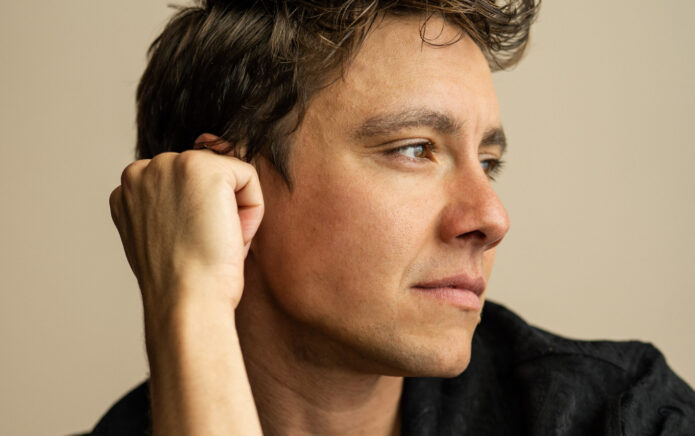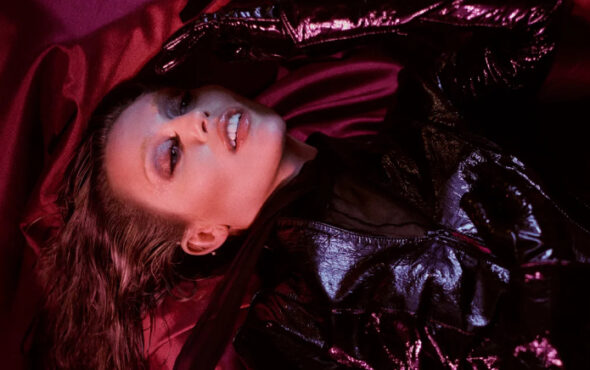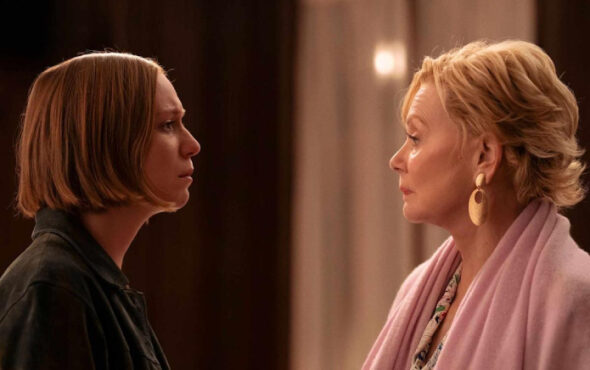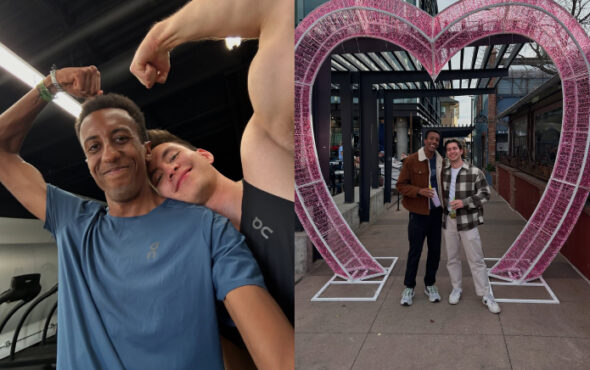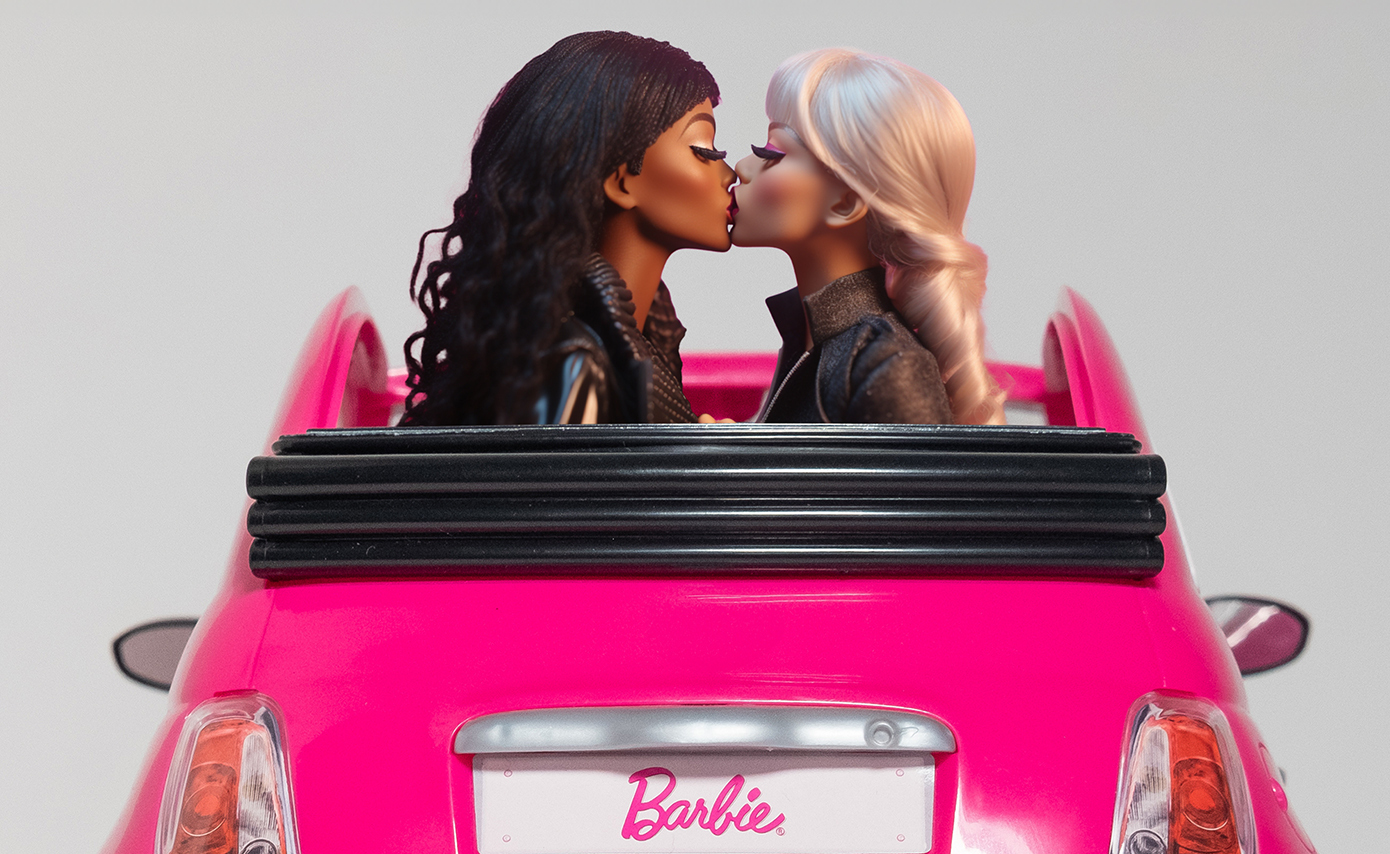
As a wise woman once said, life in plastic “is fantastic” — but if Greta Gerwig’s Barbie film is anything to go by, it’s also fabulous. Like, outrageously so. And no, we’re not just talking about Ken (Ryan Gosling) and Ken (Simu Liu) trying to “beach” each other off. Although we can talk about that more if you like.
Beyond the film’s neon pink trappings and those groovy disco moves, Barbie isn’t just giving camp. It’s serving full-blown gay, and by “gay”, we mean “gay in a crisis.” If Margot Robbie’s Barbie wasn’t already blonde, she would have bleached her hair even faster than a gay man three days into lockdown.
But, Barbie is already the epitome of blonde perfection, so when the cracks in her perfect pastel world start to show, she seeks out help from Kate McKinnon’s Barbie character instead. It’s there that Barbie is presented with a Matrix-style choice to make, but with the red and blue pills swapped out for a glitzy high heel and a fetching mocha-brown Birkenstock.
It’s a decision as old as time, for lesbians at least, and any implication that Barbie might be one herself hits full force when she bursts into song just seconds later with the Indigo Girls classic ‘Closer To Fine’.
Lines like “There’s more than one answer to these questions. Pointing me in a crooked line” demonstrate the crossroads that Barbie finds herself in at this point, while the fact that both she and Ken are singing the track together with such gusto demonstrates that they’re both raging homosexuals.
Nothing unites the gays and the sapphics quite like America’s best lesbian folk rock music duo. But who would have thought that Barbie and Ken of all people would be gay and do crime so brazenly in Hollywood fare like this?
Since Barbara Millicent Roberts debuted with that zebra-striped swimsuit at the American International Toy Fair on March 9, 1959, the general masses have long presumed that Barbie is straight, and it’s easy to see why. Between her endless love for Ken and obsession with things deemed stereotypically “girly”, Barbie seems to perpetuate heteronormative ideals with all the verve of a youth pastor singing acoustic Ed Sheeran songs at Bible Camp – yet such a reductive view misses the point of Barbie entirely.
Back when Mattel’s Ruth Handler first created Barbie, she did so in reaction to all the baby and housewife dolls that dominated girls’ bedrooms in the 50s. The idea was to emancipate children from striving towards just motherhood and motherhood alone. As Handler stated in her 1994 biography, “My whole philosophy of Barbie was that through the doll, the little girl could be anything she wanted to be. Barbie always represented the fact that a woman has choices.”
Unfortunately, those “choices” have never included queerness, at least not in any direct or meaningful way. That’s not to say being gay is a choice, but by failing to conceptualise queerness in Barbie’s world at all — beyond the occasional round of allyship — this void held children back from envisioning a future that was anything other than straight.
Still, this didn’t stop millions of baby queers from finding ways to make Barbie their own. In the words of Jennifer “Mother” Coolidge, “The gays just know how to do stuff,” and that’s especially true when it comes to co-opting things that weren’t originally made for us. We’ve had enough practice, after all, but in Barbie’s case, sociologist Alexander Avila suggests that it’s precisely because of the brand’s extreme heteronormativity that queer people connect with it so much.
“Barbie represents such an exaggerated and caricatured version of heteronormative life that it ironically breaks the facade of heteronormativity altogether,” says Avila, the creator behind Overanalyzing the Barbie Movies with Queer Marxist Theory.
“Barbie’s perfect pink house and perfect pink boyfriend are comical, not because they are pink but because they are supposedly perfect… too perfect. Barbie and Ken’s ‘perfect’ heterosexuality is an imitation without an original, a testament to the ways heteronormativity, for queer people at least, feels so funny, so silly, so contrived. In playing with our Barbies, the wear of playtime shows how a lived life can never match this perfect heteronormativity.”
Because Barbie’s branding is so contrived and artificial on a surface level, there’s huge scope for queer people, young and old, to imprint their own experiences on the doll and find personal meaning that resonates beyond the original design and purpose.
“It doesn’t take much to chop Barbie’s hair off, switch Barbie’s clothes, pronouns, partners, voice, or story,” says Erica Rand, the author behind Barbie’s Queer Accessories and professor of gender and sexuality studies at Bates College. “I think that’s partly why some people fondly remember what they did with Barbie as an early hint of their own queerness, and why adults gravitate to Barbie as a vehicle for play, protest, and parody.”
“I got interested in studying Barbie myself in 1990 when a friend sent me an issue of the dyke sex magazine On Our Backs with some photo porn involving a woman using Barbie as a dildo. (For inquiring minds, feet first.) I was also jazzed, a few years later, when the Barbie Liberation Organization bought talking Barbie and GI Joe dolls, switched their voice boxes, and returned them to the store for unsuspecting consumers to find.”
It’s important to note here that Barbie doesn’t universally appeal to everyone who identifies as queer. “Some people remember being pressured to demonstrate proper gender and sexual tendencies by playing or not playing with her,” says Rand. “Others remember being affected by the way that, even when Barbie’s world is multiracial, it elevates the blondest of white people. As this movie itself illustrates, the primary Barbie and Ken are always white.”
But for those who did play with Barbie as a kid, or even as an adult if that dildo story is anything to go by, there’s something truly radical about using something intrinsically straight to explore our own femininity and experiences with gender. By subverting Barbie’s physical appearance and even her purpose, queer people can reappropriate her in ways that push back at the traditional norms she’s presumed to symbolise, at least in the mainstream.
That’s also true for Ken as well. Look no further than the #LesbianKen meme or Earring Magic Ken, the gayest version of Ken who’s ever existed. It’s a low bar, admittedly, but with that pink mesh top paired with this season’s must-have chrome cock ring accessory, Barbie herself must have been questioning their relationship when this version of Ken first minced onto the scene in 1992.
Mattel started to question the point of Earring Magic Ken too, so they halted production just six weeks later in a bid to avoid being tarred with that rainbow brush. Clearly though, they underestimated how fast the gays can walk back and forth to their nearest toy shop. Only two years before The Simpsons aired ‘Lisa vs. Malibu Stacy,’ a gaggle of Waylon Smithers’ type gays bought up enough toys in those short six weeks to make Earring Magic Ken the best-selling Ken in Mattel history.
We really weren’t lying when we said, “The gays just know how to do stuff,” and that old adage also rings true when it comes to tackling the darker aspects of Ken’s fruity association with all things kitsch.
Around this same time, a satirical zine named Diseased Pariah News reimagined Barbie and Ken as ‘AIDS Barbie’ and ‘KS Ken’. Fake adverts for toys like ‘AIDS Barbie’s New Malibu Dream Hospice’ helped people living with AIDS reject victimhood by poking fun at unattainable beauty standards and how they contrasted with the illness that ravaged their bodies.
Far less radical, yet still revolutionary was Mattel’s decision to finally give kids the power to reimagine dolls for themselves 27 years later with a gender-inclusive line in 2019. The Creatable World dolls come with various clothing options and different hair lengths that can be mixed together in more than 100 different combinations, cock ring not included.
Barbie herself isn’t quite as flexible yet, double joints aside, but the recent move to model a new version of her on trans icon Laverne Cox does help affirm that Barbie really can be for anyone. Or at least has the potential to be one day.
“Barbie always represented the fact that a woman has choices,” said Ruth Handler, but the Barbie she created was born in a world where these “choices” and even the concept of womanhood was far more limited, forcing queer people to find their own meanings in relation to Barbie and Ken. Or “inspiring” rather than “forcing”, depending on how you look at it. But now, over sixty years later, it’s Barbie who will have to make this choice for herself at last.
Will Margot Robbie’s Barbie don a practical Birkenstock and go on a journey of gay self-discovery onscreen? It’s not like we’re short of bangers from the Indigo Girls to soundtrack this. Or will she choose a glitzy high heel and continue her plastic, not-so-fantastic life without even trying to see what else could be out there? Like the queer kids who admire Barbie, Barbie herself can now be anything she wants to be. All she has to do is imagine it. And remember, when it comes to imagination, “Life is your creation.”
